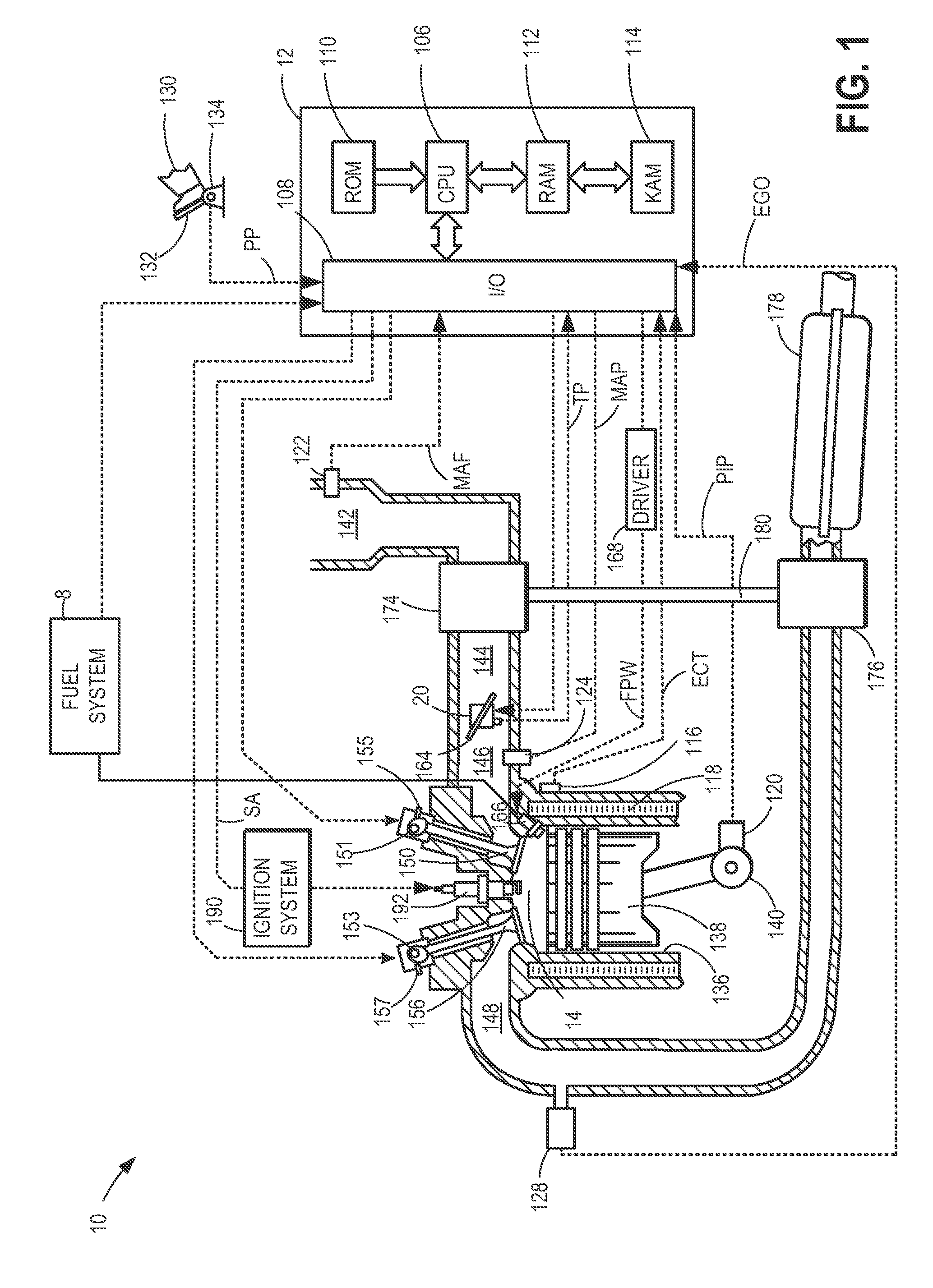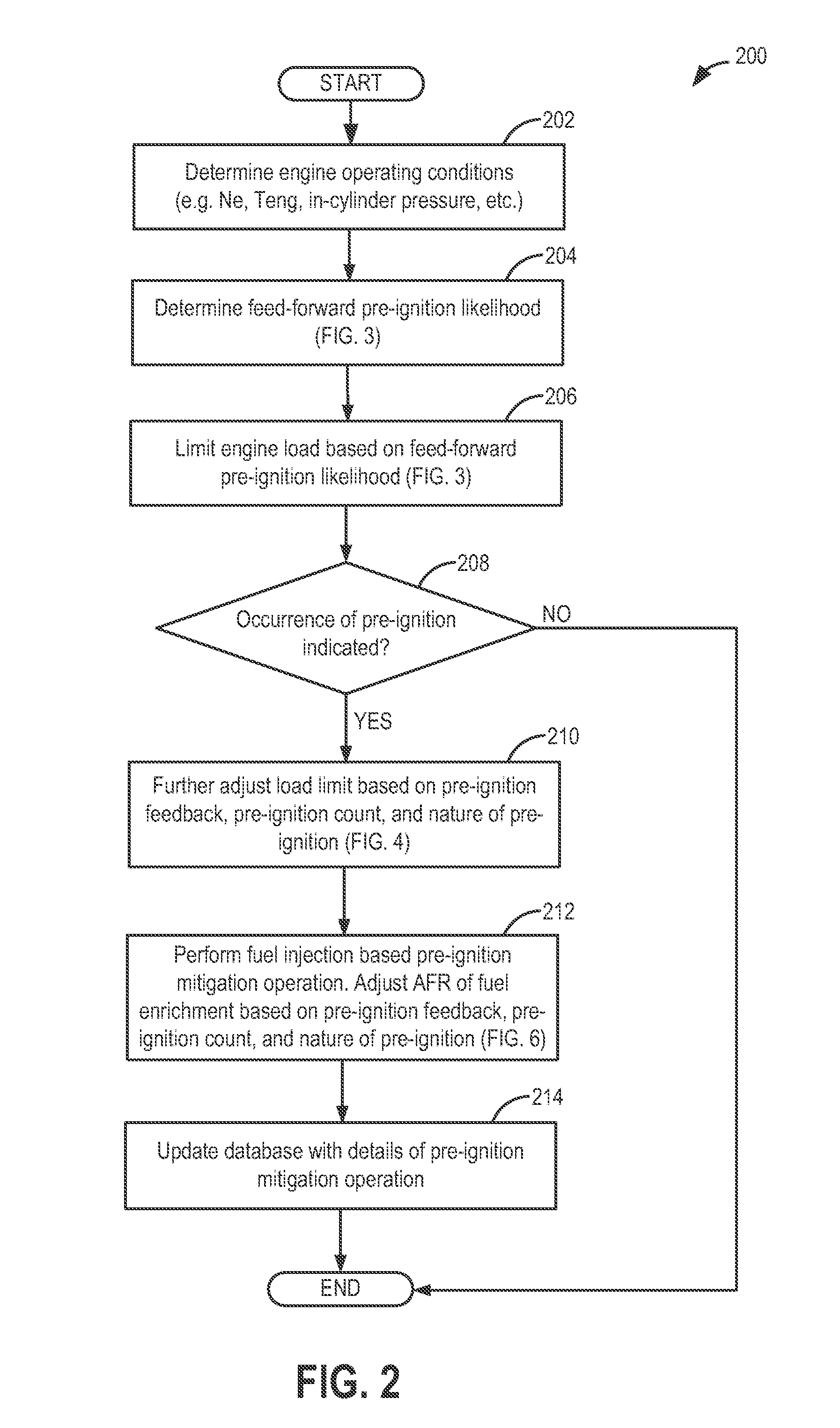Method and system for pre-ignition control
a vehicle engine and pre-ignition control technology, applied in the direction of electric control, machines/engines, instruments, etc., can solve the problems of increased exhaust emissions, reduced combustion efficiency, and increased exhaust emissions, so as to reduce the degree of leanness and duration of enleanment, and increase the richness and/or duration of preceding enrichment.
- Summary
- Abstract
- Description
- Claims
- Application Information
AI Technical Summary
Benefits of technology
Problems solved by technology
Method used
Image
Examples
example enrichment
and enleanment profiles, as described previously, are now explained in the example fuel injection operations of FIGS. 8-9.
First turning to FIG. 8, map 800 depicts a first example pre-ignition mitigating operation according to the present disclosure. An air-to-fuel ratio (AFR) of the injected fuel mixture is shown along the y-axis while time is depicted over the x-axis. As shown, before t1, the fuel mixture injected inside a cylinder may be substantially at stoichiometry. At t1, in response to pre-ignition indication 801, the affected cylinder may be operated with a first air-to-fuel ratio AFR1 richer than stoichiometry for a first duration 804. The degree of richness 806 of the injection and the first duration 804 may be adjusted based on engine operating conditions at the time of the pre-ignition indication 801. After the first duration has elapsed, at t2, a controller may be configured to determine an amount of excess fuel injected over the first enrichment operation. As such, the...
PUM
 Login to View More
Login to View More Abstract
Description
Claims
Application Information
 Login to View More
Login to View More - R&D
- Intellectual Property
- Life Sciences
- Materials
- Tech Scout
- Unparalleled Data Quality
- Higher Quality Content
- 60% Fewer Hallucinations
Browse by: Latest US Patents, China's latest patents, Technical Efficacy Thesaurus, Application Domain, Technology Topic, Popular Technical Reports.
© 2025 PatSnap. All rights reserved.Legal|Privacy policy|Modern Slavery Act Transparency Statement|Sitemap|About US| Contact US: help@patsnap.com



